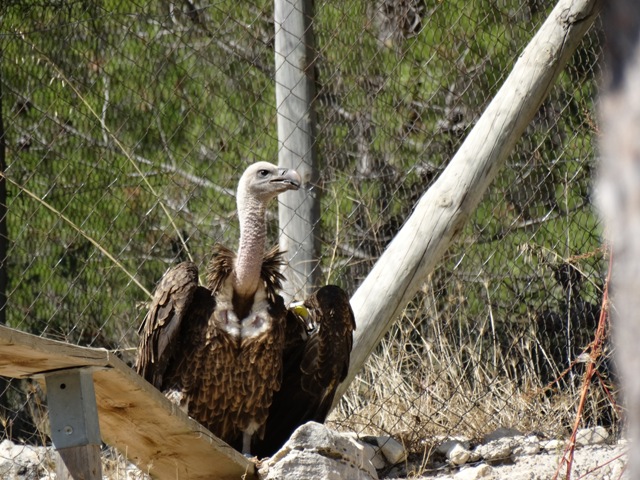Tagging of vultures – putting up GPS/GSM tags in live, wild vultures, is a powerful conservation and research tool, as those tags allows us to follow the vulture´s detailed foraging behaviour and identify key areas for feeding, but also potential threats within their vast range areas. The VCF is often responsible for the tagging of wild or reintroduced vultures in many of our vulture conservation projects, and most of the maps of the vultures we tagged can be seen in our web page.
One has to recognise – always – that while tagging is a very tool, it can also be detrimental to the birds if the tags are not properly put – unfortunately there have been several cases where individuals did not survive due to inadequate or misplaced tags. The VCF tries to adhere to the highest standards, and all our tags are put by the most experienced people, and we are constantly trying to evaluate impacts and learn from others.
Many other organisations use tags to follow vultures – this time we bring you some data and information on two schemes – both with African vultures, but one in Africa and one in Europe!
In Africa, Darcy Ogada from The Peregrine Fund has been tagging vultures, including the critically-endangered Ruppell´s vulture (Gyps rueppellii). Darcy and her collaborators have been unearthing that African vultures also do intracontinental migrations and vast movements, in one case going from Kenya to Chad, and back. See the film here.
Last October also saw the first-ever tagging of a Ruppell´s vulture in Europe, by our partners AMUS. Ruppell’s vulture is a species of African distribution, that has started to appear in the Iberian Peninsula 30 years ago – mostly individuals that are flying north in Spring with the many Iberian griffons wintering in the African Sahel. In Africa the species has suffered a great decline and is currently listed as Critically Endangered – more threatened than the Iberian imperial eagle or the Egyptian Vulture, but the number of observation in Europe has been steadily increasing.
However, we know very little of its movements and survival in Spain and Portugal – do birds stay a long time? Do they migrate again to Africa? For this reason, AMUS, in collaboration with Màquia Serveis Ambientals, Hawk Mountain Sanctuary, Aquilasystem and the municipality of Alcoy (Valencia) tagged the first Ruppell´s vulture with a GPS tag in Europe.
The vulture, which was also marked with white wing markings with the black code H5, was released at the beginning of October 2017, from Alcoy, and quickly flew over the Sierra Morena, Doñana, the south of Portugal and of course the area of the Strait of Gibraltar, before returning to the Sahel area at the beginning of November.
Photos: Carmen Villena Escribano


